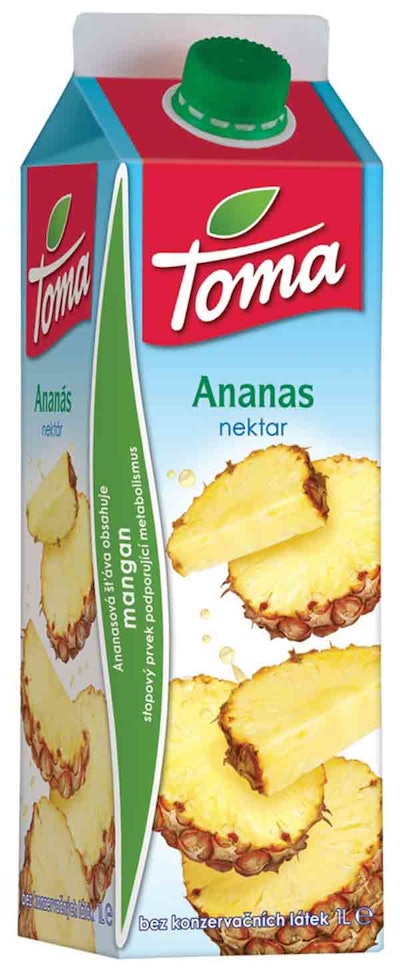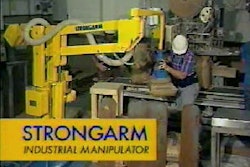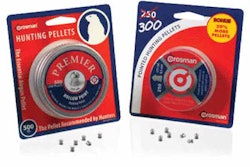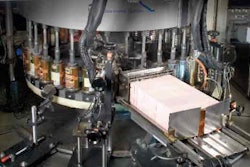
An aseptic gable-top paperboard/aluminum foil carton with a distinctive curved panel provides marketing differentiation and distribution advantages for 1-L juices sold by Pepsi Americas Central Europe Group (PAS CEG).
Supplied by Elopak (www.elopak.com), the Pure-Pak® Curve cartons helped PAS CEG reintroduce juice and nectar varieties last summer. The cartons replaced brick-shaped cartons from a different vendor. In January, PAS CEG launched the Tropicana brand in these cartons into
“In 2005, Pepsi Americas Central Europe Group made the strategic decision to increase its long-term investments into its juice-based brands,” says Petr Mlatecek, marketing director for PAS CEG based in
An aseptic Elopak line was installed in
Productive filler
Elopak produces carton blanks at its factory in Terneuzen, The Netherlands. The material is printed, cut, creased, and pre-sealed on the side and then shipped to Pepsi
PAS CEG purchased an Elopak U-S 80A machine that erects, fills, and heat-seals the cartons in three lanes, with an output of 8,000 1-L cartons/hr. The U-S 80A opens carton blanks on a mandrel, heat-sealing the bottom. Cartons are conveyed into an aseptic chamber on the machine where they are sterilized with a 2% hydrogen peroxide spray, then dried with ultraviolet light. High-precision diaphragm fillers dispense juice into the cartons, whose gable tops are then folded and heat-sealed. According to Elopak, slightly different mandrels are used for the Curve carton than the standard gable-top, but otherwise the shape offers no unusual filling challenges.
The carton’s seal area and the flange of a reclosable high-density polyethylene Pure-Twist UL screw cap are heated. The closure is adhered to the container through the heated PE and pressure. The surface area of the carton where the cap is applied is prepared in advance by Elopak’s carton converting plant by a circular, shallow cut that’s machined carefully so the barrier is not affected. Mlatacek says a reclosable cap “is a mandatory feature for the vast majority of juices in
Besides distribution advantages, PAS CEG benefits from the unusual curved carton. “One of the key reasons for choosing the carton was that it is clearly distinctive from competitive pack shapes, and has not been used so far by any other competitor,” Mlatecek explains.
“The curved portion is actually a fifth panel of the carton. It is used to communicate the functional benefits of each flavor,” he adds. For example, graphics on an orange juice’s curved panel says, “one glass of 100% orange juice covers daily intake of Vitamin C.”
Mlatecek adds that the Elopak cartons are “easy to handle and pour, and have an overall high-quality consumer perception proven by independent research conducted prior to [PAS CEG’s] final selection of this carton.” Asked about the economic ramifications of the change in the carton, he said that the company does not disclose such information. He does say Toma shelf prices were increased 8% due to a combination of increased carton costs and higher costs of concentrates.
The relaunched Toma brands have certainly helped the company’s economic picture. Mlatecek says the cartons have “led to a higher rotation in stores, which resulted in significant volume and share-of-market increases compared to the previous year. Consequently, this led to shelf-space gains.” It’s no wonder PAS CEG is “juiced” about the Curve carton.























